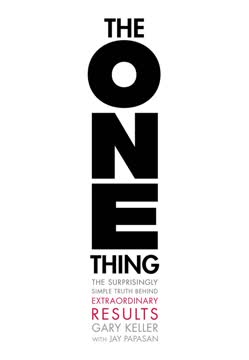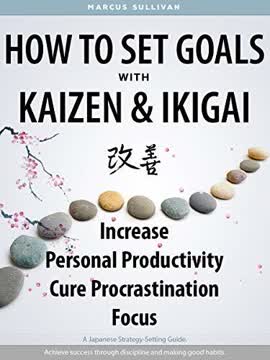Key Takeaways
1. Embrace the "Dumb Pill" Approach: Let Your Client Shine
Stop trying to be so smart. Stop trying to solve the client's challenge. Stop trying to figure it all out.
Reframe your role. As a coach, your primary function is not to showcase your intelligence or problem-solving skills. Instead, your goal is to facilitate the client's own brilliance and creativity. By metaphorically taking a "dumb pill," you create space for the client to think, process, and arrive at their own solutions.
Resist pattern-matching. The human brain naturally seeks to connect new information with familiar patterns. However, in coaching, this tendency can be counterproductive. Instead of trying to fit the client's situation into your existing mental frameworks, allow their unique perspective to unfold without preconceived notions.
Focus on the present. Rather than thinking several steps ahead, concentrate on being fully present with the client. This approach allows you to respond authentically to their immediate needs and thoughts, fostering a more productive coaching relationship.
2. Adopt a Cinematic Perspective: Your Client is the Hero
Clients earn a lot of victories and being there to see them do it is fun.
View coaching as an adventure movie. Imagine your client as the protagonist in their own story, facing challenges and overcoming obstacles. Your role is not to be the hero, but to be a supportive presence as they navigate their journey.
Maintain confidence in your client. Just as you trust that James Bond or Jason Bourne will ultimately prevail, have unwavering faith in your client's ability to overcome their challenges. This belief creates a positive atmosphere that encourages growth and progress.
Resist the urge to rescue. When clients face significant challenges, it can be tempting to step in and "save the day." However, allowing clients to work through their own difficulties is crucial for their personal growth and development. Your job is to facilitate, not to solve.
3. Keep Questions Simple and Primitive
Primitive questions are powerful invitations for the client to explore something.
Embrace simplicity. Resist the urge to over-process your thoughts before asking questions. Often, the first, most basic question that comes to mind is the most powerful one you can ask.
Examples of primitive questions:
- "What do you make of that?"
- "How should we get started?"
- "Where are we in this conversation?"
- "What about that is really important to you?"
- "What's a good way to unpack this?"
- "What's your decision-making process need to be?"
Trust the power of simplicity. These straightforward questions invite clients to explore their thoughts and feelings more deeply, often leading to profound insights and breakthroughs.
4. Say "Yes" to Your Client's Ideas
Whatever your client says, just go with it. Go with positivity, curiosity and a spirit of "Yes."
Create a safe space. By adopting a "Yes" attitude, you create an environment where clients feel safe to express themselves freely. This openness encourages creative thinking and risk-taking.
Avoid judgement. Resist the urge to immediately evaluate or criticize your client's ideas. Instead, approach each suggestion with curiosity and openness, exploring its potential together.
Build trust. When clients feel that their ideas are welcomed and valued, it strengthens the coaching relationship. This trust allows for more meaningful and productive conversations.
5. Cultivate Genuine Curiosity
As a coach, you should exhibit a positive, client-centered kind of curiosity.
Suspend judgment. Approach each client interaction with a fresh perspective, setting aside preconceived notions or assumptions. This open-minded stance allows for deeper exploration and understanding.
Ask exploratory questions. Instead of making assumptions, ask questions that invite the client to delve deeper into their thoughts and feelings. For example, "What do you think of that?" or "How are you thinking about it now?"
Embrace the unknown. Recognize that not knowing is a powerful position in coaching. It allows you to approach each situation with genuine curiosity and openness to new possibilities.
6. Trust Your Client's Guidance
"This sounds like a really important issue for you. What's the best way for us to get started with it?"
Empower your client. Recognize that your client is the expert on their own life and experiences. Trust in their ability to guide the coaching process effectively.
Be comfortable with uncertainty. When you're unsure about the direction of the conversation, it's okay to ask the client for guidance. This collaborative approach reinforces the partnership aspect of coaching.
Remain flexible. Be prepared to shift gears based on your client's needs and preferences. This adaptability ensures that the coaching process remains relevant and valuable to the client.
7. Balance Empathy with Objectivity
Too much empathy puts you into the shoes of the client, allowing you to experience the feelings, thoughts, and perspective of the client. While that might sound like a good thing, it's really not because then you don't provide any objective help to the client.
Maintain perspective. While empathy is important in building rapport, excessive empathy can cloud your judgment. Strive to understand your client's perspective without becoming entangled in their emotions.
Invite new perspectives. Use your objectivity to help clients see their situations from different angles. This "balcony view" can lead to fresh insights and solutions.
Focus on forward movement. Remember that the goal of coaching is to help clients progress towards their objectives. Maintain enough emotional distance to keep the conversation productive and solution-oriented.
8. Unleash Creativity Like a Child with a Crayon
Coaches invite clients to think different – to make stuff up, to be creative, to experiment and to get outside the proverbial boring box.
Embrace creativity. Approach each coaching session with the playful, imaginative spirit of a child. This mindset encourages innovative thinking and problem-solving.
Customize your approach. Avoid relying too heavily on pre-formulated questions or techniques. Instead, adapt your methods to fit the unique needs and circumstances of each client.
Encourage experimentation. Foster an environment where clients feel free to explore unconventional ideas and solutions. This openness can lead to breakthrough insights and transformative change.
Last updated:
Similar Books










Download PDF
Download EPUB
.epub digital book format is ideal for reading ebooks on phones, tablets, and e-readers.




